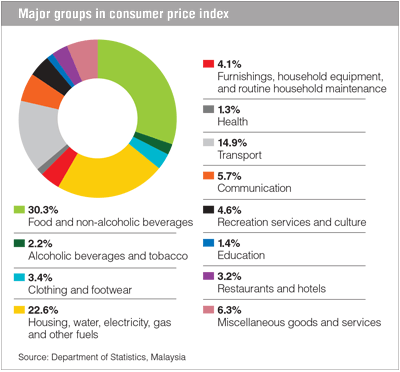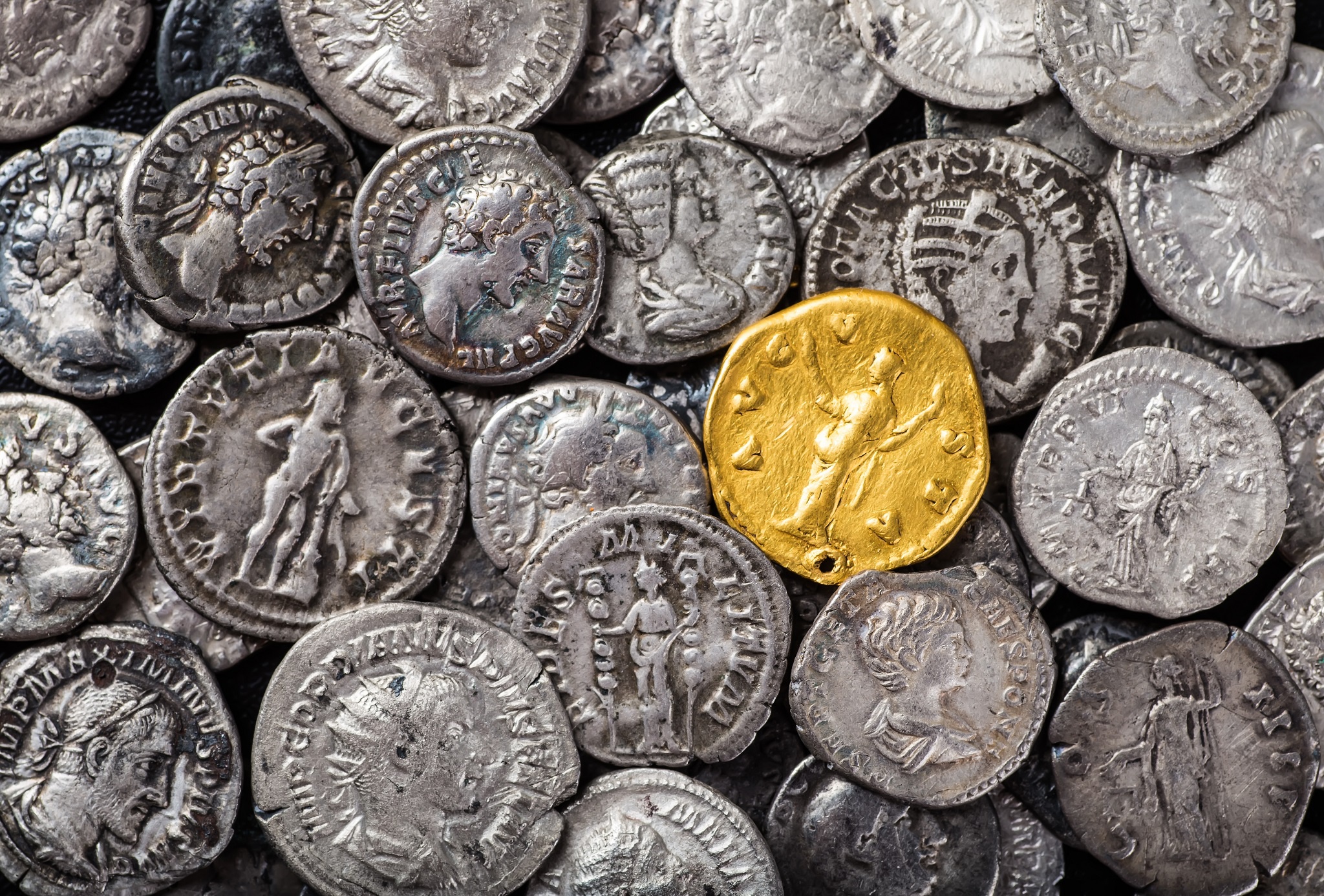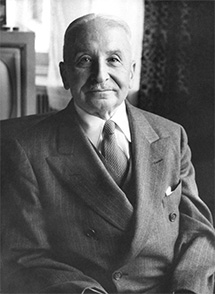Inflation is one of the most pervasive and cunning tax that a government can impose on its people. You might be wondering how can I label the phenomenon of rising prices as a form of tax. To put it simply, I categorize every and any actions that a government undertakes which results in reducing the wealth of its people as a form of taxation. Such actions are approved by the existing laws of the land and as such, anyone who refuses to ‘pay up’ is considered a felon. Whether or not such actions by the government result in the improvement of the people’s well-being, that’s a story for a different time.
I hope to illustrate to you how inflation is actually an invisible tax that is manipulated by the authority to ‘adjust’ your purchasing power. In other words, your wealth is not in control as much as you think.
So, what prompted me to write this article? About a week ago, I ran a survey on Twitter to find out how people defines inflation. There were 32 participants and here’s how the result looks like.
75% of the participants defined inflation as the devaluation of money, while the other 25% defined it as the phenomenon of rising prices. I believe if you start asking the people around you, most would define inflation as the latter.
I suspect my survey’s result of 75% referring to inflation as the devaluation of money is probably because I’ve quite a number of Twitter friends who are into economics, and they lean very much towards the Austrian school of reasoning.
How has an economic term so commonly used in our daily lives become so divided in its meaning? Is there something sinister going on? Is someone trying to confuse the general public on what inflation really means and if so, how could they have benefited from such a confusion? In my opinion, there are indeed conscious efforts to ensure the public does not grasp what inflation really means.
If you do a quick search on the web for the definition of inflation, you will no doubt come across many results which looks similar to the one given by Investopedia.
Even Investopedia confuses inflation with the rising price of a basket of goods. The ‘basket of goods’ concept further confuses the term inflation. The primary reason why a basket-tracking methodology is unreliable because it allows for manipulation by the very people who are given the task to monitor the goods in the basket. The committee that is responsible for this basket of goods can choose what type of goods should be in it and also the quality of the goods.
Let’s have a closer look at the basket of goods concept, where the following diagram taken from the Department of Statistic of Malaysia shows a list of indices for food and non-alcoholic beverages.

From the example above, we have no idea what type of meat is being indexed. Is it beef, mutton or pork? Also, we have no idea what grades the eggs are. Are they referring to kampung eggs? Neither do we know what fruits the index is referring to.
When the basket committee tracks the price of milk, did they specify the type of milk being tracked, low-fat milk or lactose-free milk? What are the packaging used for the milk in question? Is it milk packed in carton boxes, glass jars or plastic bottles? Changes in the cost of packaging would also have an effect on the price of the milk, wouldn’t it?

In conclusion, it’s suffice to say, all these mumbo-jumbo stats which are also commonly known as Consumer Price Index (CPI) are useless to effectively keep track of rising prices and even more misleading- the inflation rate. Indices like these give statistics a bad name.
Since every households’ spending habits are uniquely different, any such indexes even if it’s able to approximate very closely the rising prices, would not have been useful to every households in question. Imagine vegan households who would like to track price hikes, would the Department of Statistics publish a basket of goods for non-meat dietaries? You get the point, it’s a pointless exercise.
To learn what the term ‘inflation’ means, it would be helpful to understand how the term was invented.
Let’s look at how inflation works in the medieval ages, when kings already knew how to make use of ‘inflation’ to increase their own personal wealth.
 I shall illustrate the history of inflation through a fictional story. Let’s call the ruler of our kingdom – King Lontong. King Lontong was having some problems financing his lavish lifestyle and he’s running out of excuses to justify higher taxes on his people. He then had this brilliant idea where he could inflate his wealth by debasing the gold coins (reducing the composition of gold by replacing it with cheaper metals) currently circulating in his kingdom. To put his plan into action, he issued a decree where all existing gold coins will no longer be legal tender and must be returned to the palace. In order not to rouse the suspicions of his people, he also made an offer that for every gold coins returned, the people will receive one more new gold coin in return.
I shall illustrate the history of inflation through a fictional story. Let’s call the ruler of our kingdom – King Lontong. King Lontong was having some problems financing his lavish lifestyle and he’s running out of excuses to justify higher taxes on his people. He then had this brilliant idea where he could inflate his wealth by debasing the gold coins (reducing the composition of gold by replacing it with cheaper metals) currently circulating in his kingdom. To put his plan into action, he issued a decree where all existing gold coins will no longer be legal tender and must be returned to the palace. In order not to rouse the suspicions of his people, he also made an offer that for every gold coins returned, the people will receive one more new gold coin in return.
Back in the palace’s mint, King Lontong ordered his blacksmiths to melt all the gold coins that he’d so cleverly confiscated and mint new coins of the same value. However, for every new coins issued, he added 90% copper into the coin and only retained 10% of gold in it. This means that for every coin that he confiscated, he could now make ten new coins out of it. Although the composition of the gold has been reduce, King Lontong would use his authority as the king of the land to assign the same value that the coins once had.
Once the entire minting exercise is over and upon returning the newly-minted gold coins back to his people, King Lontong now has 8 times the amount of coins. Remember King Lontong also promised to give an additional coin to the people for their cooperation earlier. And the people rejoiced as they drank and celebrated to the generosity of King Lontong. Yet, King Lontong himself rejoiced even more- he just created so much more wealth without producing anything in return to the economy of his kingdom.

Unbeknownst to the people in Lontong Land, they would suddenly be faced with a strange phenomenon. As many moons passed since the day the new coins was introduced, the prices of vegetables, meat, kitchenware, potteries, shoes and many other general goods has began to increase. And there seems to be always shortage of goods.
Meanwhile back in the palace, King Lontong began to distribute a big portion of his newfound wealth to his many concubines and heirs. On top of that, he also gave a huge sum to his court officials to keep them loyal. All of these individuals who received the windfall started to spend their wealth in the market and bought up lots of goods and lands.
It is to be mentioned also that while the number of new coins had increased, the production of goods in Lontong Land had not experience any growth as resources and labor had remained roughly the same. However, when a huge amount of goods in the markets around the kingdom was bought up by King Lontong’s royal household, court officials and certainly by King Lontong himself, there’s now less goods to go around for the common people to purchase. However, the demand for these goods did not wane. Thus, the price for these goods will naturally become more expensive as the demand now exceeds the available supply. The common folks have no choice but to offer a higher price for goods that is now in short supply. As a result, the peasants’ new coins no longer have the same buying power as before.
It might be said that as prices of goods start to increase, King Lontong would also have to pay a higher price for these goods. However, there are two main advantage King Lontong had over the common folks. First, he had acquired much of the goods available in the land with his debased gold coins way ahead of the price hike. Secondly, King Lontong did not contribute anything to the economy of his kingdom to acquire his new wealth- he literally created his wealth from his mint. He did not earn it through producing any goods of value. The same cannot be said of the peasants. Not only do they have to work harder to keep up with the increasing price of goods, the purchasing power of their coins also decreased each time King Lontong issues new coins into the circulation.
If you think King Lontong’s fraudulent shenanigan only exists in fictional tales, you can read up King Henry VIII and The Great Debasement policy which he introduced in 1544.
Fast forward few centuries into the future, this is exactly the same way how government central banks print paper money and inflate the money supply. In essence, inflation has nothing got to do with price but everything to do with money supply. Rising prices is just the aftermath which results from the act of increasing the money supply in circulation. And every time new money is printed, it erodes the value of money that is held by the people. Imagine someone who worked very hard for 20 years to save RM1,000,000 in his bank account. All the purchasing power would have been eroded if the central bank continues printing money without a care for the wealth destruction that it is doing to the economy. This is why it makes sense to store or hedge your ‘purchasing power’ in precious metals such as gold and silver that are known to preserve the value of your money.

In an economy hit by hyperinflation where the central bank’s money printing machine goes out of control, it becomes pointless to hold on to paper money. It might even hit a point when wiping your ass with paper money becomes the cheaper alternative as toilet papers become a luxurious commodity. People living in a hyperinflated economy would convert all their paper money into goods almost immediately because they have no idea how much purchasing power their paper money would lose by the time they wake up the next day. In situations like this, even a can of tuna would preserve value better than paper money issued by the government.
Again, I urge you to scour through the web as you embark on this journey of figuring out the definition of inflation and come to realization that the term has been intentionally misrepresented to confuse the unsuspecting public on the evil of such a policy. You should also start to question how these attempts to mask the real meaning of inflations are being used by the power-hungry elites to acquire wealth without lifting as much as a finger while at the same time imposing such a heavy punishment to an entire nation of people whom they share the same currency with. This is not even a conspiracy theory. It’s all documented in the history of money.
Insofar as I am concerned, one of the best explanations on the term inflation came from Ludwig von Mises, which reads as follow:

“Inflation, as this term was always used everywhere and especially in this country, means increasing the quantity of money and bank notes in circulation and the quantity of bank deposits subject to check. But people today use the term `inflation’ to refer to the phenomenon that is an inevitable consequence of inflation, that is the tendency of all prices and wage rates to rise. The result of this deplorable confusion is that there is no term left to signify the cause of this rise in prices and wages. There is no longer any word available to signify the phenomenon that has been, up to now, called inflation. . . . As you cannot talk about something that has no name, you cannot fight it. Those who pretend to fight inflation are in fact only fighting what is the inevitable consequence of inflation, rising prices. Their ventures are doomed to failure because they do not attack the root of the evil. They try to keep prices low while firmly committed to a policy of increasing the quantity of money that must necessarily make them soar. As long as this terminological confusion is not entirely wiped out, there cannot be any question of stopping inflation.”
And here’s how Murray Rothbard defines inflation in his magnum opus Man, Economy and State.
 The process of issuing pseudo warehouse receipts or, more exactly, the process of issuing money beyond any increase in the stock of specie, may be called inflation. A contraction in the money supply outstanding over any period (aside from a possible net decrease in specie) may be called deflation. Clearly, inflation is the primary event and the primary purpose of monetary intervention. There can be no deflation without an inflation having occurred in some previous period of time. A priori, almost all intervention will be inflationary. For not only must all monetary intervention begin with inflation; the great gain to be derived from inflation comes from the issuer’s putting new money into circulation. The profit is practically costless, because, while all other people must either sell goods and services and buy or mine gold, the government or the commercial banks are literally creating money out of thin air. They do not have to buy it. Any profit from the use of this magical money is clear gain to the issuers.
The process of issuing pseudo warehouse receipts or, more exactly, the process of issuing money beyond any increase in the stock of specie, may be called inflation. A contraction in the money supply outstanding over any period (aside from a possible net decrease in specie) may be called deflation. Clearly, inflation is the primary event and the primary purpose of monetary intervention. There can be no deflation without an inflation having occurred in some previous period of time. A priori, almost all intervention will be inflationary. For not only must all monetary intervention begin with inflation; the great gain to be derived from inflation comes from the issuer’s putting new money into circulation. The profit is practically costless, because, while all other people must either sell goods and services and buy or mine gold, the government or the commercial banks are literally creating money out of thin air. They do not have to buy it. Any profit from the use of this magical money is clear gain to the issuers.
t this point, it should be clear that the real culprit in our weakening purchasing power and stagnating real wages is really the symptom of irresponsible money printing by the government. It is also no coincidence that the increase of money supply in Malaysia’s economy correlates very closely to the government spending for the past few decades.
To conclude, it is very important that we understand that inflation does not refer to the phenomenon of prices going up. Inflation is an act of printing more money- the inflating of money supply. As a result of having more money in circulation and the rate of goods production being roughly the same, price goes up because more money chases after fewer goods.
If we want to avoid the weakening of our purchasing power and to ensure that our savings do not get chewed up by inflationary termites, we must make sure that our government do not continue their irresponsible expenditures that has been putting us in a deficit every year since 1998.